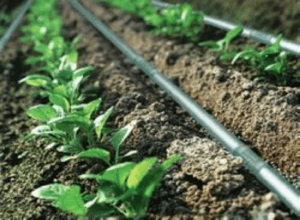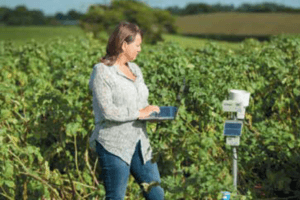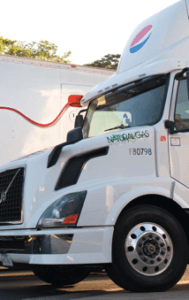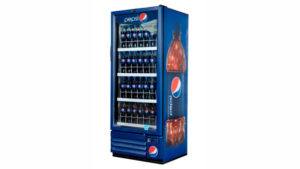PepsiCo: Doing more with less, purposefully.

Is PepsiCo poised to transform environmental challenges into a competitive advantage?
Few industries are more reliant on nature than “Agriculture”.
However, PepsiCo the global food and beverage giant worth $63 billion in net revenue [1] is largely dependent on availability of natural resources to manufacture its beverage and snack products. It is crucial to mention here that “Agriculture” is responsible for 70% of the world’s freshwater consumption [2]. Combined with depleting global water reserves, shrinking fertile land and increase in greenhouse gas emissions (GHG) PepsiCo faces significant economic and environmental challenges.
Some of these include poor crop quality due to harvest failures, stalled sales expansion plans in new markets due to carbon regulations and difficulty in obtaining government licenses to open beverage bottling plants as groundwater supplies are depleting. This crisis may also herald the end of abundant free water, an alarming proposition for investors who will need to re-evaluate the long term profitability and cost structure along the value chain.
Yet these strong ties to agriculture industry, also present a massive opportunity to alleviate the global energy and water crises. PepsiCo is actively working towards driving down operational water use by promoting innovative agricultural practices, making reductions in energy use and GHG emissions. This is in addition to finding new ways to reduce packaging material and waste with key partners, and securing supply chain efficiencies in fleet management.
Has PepsiCo positioned itself well to address climate change?
Scaling Sustainable Agriculture
PepsiCo is working with farmers to grow more crops, while also helping protect natural resources by using less energy and water in operations under its Sustainable Farming Initiative (SFI). One example is the “Drip irrigation method” which delivers water directly to a plant’s roots and saves water. In India, this method cut water consumption by 30% and associated GHG emissions by 75% [3]. In UK PepsiCo reduced 50% GHG emissions and water use on potato farms through I-crop technology developed with Cambridge University. I-crop is a Web-based platform for “precision farming” that allows growers to more accurately manage water application to their crops. Moreover, growers that achieved water and carbon reductions saw potato yields increase over a 5 year period. These learnings are being applied globally for 28,000 farmers to reduce their environmental footprint while improving their crop yields and livelihoods.
Drip Irrigation I-Crop Technology
Driving Global Transportation and Refrigeration Efficiencies
Realizing the importance of reducing GHG emissions from product distribution by building greener trucks, PepsiCo launched a “Global Fleet Efficiencies” program utilizing advanced technology, driver training and range of vehicle types. To note, trucks move 70% of the goods in US. Though these trucks make up 7% of all vehicles on US roads, they consume 25% of all transport fuel and unlike many car models their fuel efficiency has not changed in 45 years [3]. Latching on to existing technology including cleaner fuels, hybrid and electric vehicles, PepsiCo is capitalizing on the huge opportunity to reduce climate impact of transporting products around the world. PepsiCo FritoLay is one of the largest commercial fleet operators in North America, utilizing more than 280 electric trucks.
Additionally, given energy consumption accounts for at least 95% of GHG emissions in coolers, PepsiCo has introduced energy-efficient, HFC-free coolers to reduce harmful emissions from all of its refrigeration equipment. On average, the new units use 44% less energy than earlier models and use Hydrocarbon R290, a natural, environmentally responsible refrigerant that cuts direct GHG emissions by 99 percent.
Electric and Hybrid Fleet of trucks with alternate fuel use HFC Free Coolers
Is it enough?
After meeting its 2015 sustainability goals, as part of 2025 “Planet” Agenda, PepsiCo has committed to reduce 93% of total GHG emission outside its direct operations, improve water use efficiencies amongst direct agricultural suppliers by 15% and water use efficiency in direct manufacturing operations by +25% [4]. Clearly the company is cognizant of resolving environment challenges through a broad inclusive approach from all stakeholders in the value chain. However, it also needs to place tracking and monitoring mechanisms for water use and GHG reduction beyond its company owned operations to the whole supply chain. Incentives at each stage of the value chain could drive impetus behind the environment conservation efforts. Additionally, working closely with suppliers and farmers to collect quality data by establishing new standards for reporting and data collection would help reduce inefficiencies and lead to industry wide solutions. From a consumer standpoint, support in purchasing products with materials that are responsibly sourced, minimally packaged and get passed on for re-use would further environment protection efforts. Meanwhile, investors wanting to include climate change risks in financial analysis should demand more comprehensive water use and GHG emission reporting from companies to make investment decisions. [775 words]
Sources:
[1] http://www.pepsico.com/company
[2] http://www.unwater.org/statistics/statistics-detail/en/c/246663/
[3] https://www.howwillwe.com/thrive
[4] http://www.pepsico.com/Purpose/sustainability-reporting
http://www.oecd.org/agriculture/wateruseinagriculture.htm
http://www.worldwatercouncil.org/library/archives/water-crisis/








Mubashara – Really interesting read. What I love about PepsiCo is they started being mindful of green initiatives prior to it being “cool”. I remember they were one of the first ones to change their packaging (an initiative stated above) with the introduction of their “new” Aquafina bottles, nicknamed “Eco-Fina”, in 2009. This bottle used 50% less plastic and became the most lightweight water bottle of its size at the time. While this saved a large amount of plastic annually, it also reduced their shipping costs (lighter materials means less fuel use for transportation). I’m so glad they have stayed true to that mission over the years and are doing things like building greener trucks and helping their farmers with drip irrigation.
http://earth911.com/food/new-aquafina-bottles-reduce-plastic-use-by-50-percent/
Thought-provoking article! While I have a lot of respect for PepsiCo’s aggressive sustainability goals and recent success in achieving its 2015 50-in-5 goal, I can’t help but wonder whether PepsiCo can be doing more. Specifically, I find it hard to get behind PepsiCo’s stated vision of “Performance with Purpose,” one key pillar of which is environmental sustainability, while knowing that PepsiCo is the producer of the second largest bottled still water brand in the US. Initiatives such as more eco-friendly packaging, which Lindsey perfectly describes above, seem to pale in comparison to how much environmental harm is done through the energy required to produce and ship bottles and the added volume of plastic that ultimately ends up in landfills. A cynical response we hear a lot is: even if Pepsi stopped doing it, somebody else would – but I really believe that if one of the world leaders in beverages stood up and said ‘we’re going to stop doing this because it goes against our values,’ it would send an incredibly powerful message that Coca Cola and other competitors would have to respond to.
I was really interested in the diverse approaches that PepsiCo is using to reduce its water consumption. However, I would be very interested to know how representative are these efforts: do the 28,000 farmers in which these techniques are being applied represent most of their supply or do they represent a fraction of it? What was its global consumption before it started implementing these methods and what is its global consumption now? It would also be very interesting to know how has this affected its costs. If these changes are indeed affordable, it would serve as a great example for other corporations that rely so heavily on agricultural products and for governments to look for means to introduce these techniques in the industry.
Great article! It provides a clear and concise overview of the main efforts that PepsiCo is doing to address climate change challenges. After reading your article and as Lays loyal consumer, I think that the company should focus on expanding their sustainable agriculture practices to continue reducing the use of fresh water. It is very shocking to know that agriculture is responsible of 70% of the global fresh water consumption and there is not too much media attention to bring political action on this problem.
I like the idea of a big player, like PepsiCo, taking aggressive actions to move in the sustainable agriculture field as it can easily become a role model for other companies in the industry. Finally, even though PepsiCo has made significant progress, I think that there are still many things to do, for instance, an intervention to reduce the amount of plastic used in bottles or a new technology that makes a material that decomposes faster.